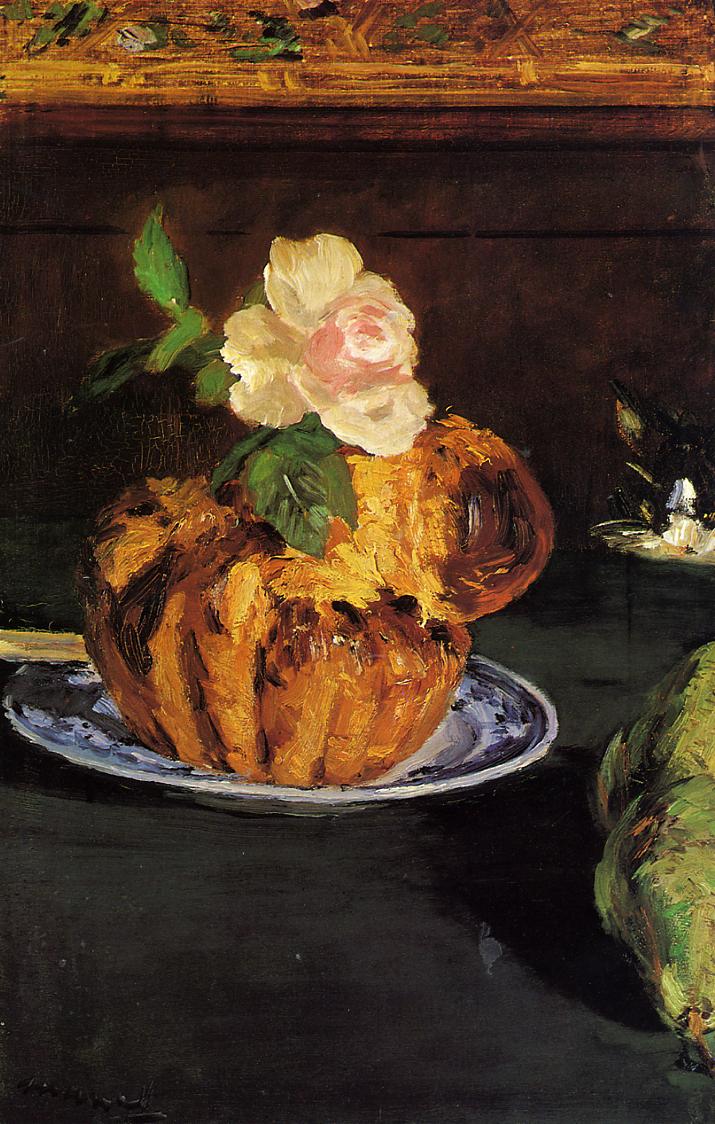impressionist-ART.com
Impressionism & Post-Impressionism
Edouard Manet - Still Life with Brioche 1880 Still Life with Brioche |
Eva Gonzalès 1849 – 1883. French painter known for her depictions of contemporary Parisian life and an aesthetic that reflects the strong influence of her mentor, Édouard Manet. ArtsViewer.com |
From Carnegie Museum of Art:
This delightful painting, with Manet's characteristic deftness of touch evident in the crust of the brioche, the petals of the rose, and the skins of the pears, speaks to the viewer on many levels. Like other works of its genre, Still Life with Brioche is a display of sensuous objects and technical virtuosity intended to stimulate pleasure and admiration. It is also a reminder of Manet's dialogue with earlier art, for it recalls still lifes by seventeenth-century Dutch artists and by Manet's eighteenth-century countryman, Jean-Baptiste-Siméon Chardin. Finally, because it is vastly different in style from academic still life, it is testimony to the changes that Manet and his contemporaries brought to French painting. Still Life with Brioche exhibits such changes by challenging the viewer to accept its radical asymmetry and loose handling of paint. Manet cuts off the pears and the cat on the right, and with a few horizontal strokes of white, blue, and pink on the left he renders a knife resting on a plate. His treatment of the wallpaper seems arbitrary; his placement of the plate, brioche, and rose, random. X-rays show that Manet originally included a lemon in the lower left, just above his signature. By removing it, he allowed the primary objects to assert themselves more strongly. Typical of Manet, this apparently simple still life is a complex statement about the artist and about the nature of painting. Completed three years before he died, it can be understood as an intricate little poem about Manet's search for new expressions of beauty and harmony and his willingness to challenge artistic traditions even late in his life.